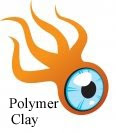Updates to My Tutorial Delivery System
While I am out of town at the beginning of April, my polymer clay tutorials will be available from my web site only.
I am also setting up a new system. Instead of sending my customers a file in pdf format, this system will generate a temporary web page and send a link to that page. The purchased tutorial file will be placed on the corresponding temporary web page. The customers will be instructed to download the file before it expires (in five days).
I hope this system will work better than the current one. With the current system (when tutorial files are e-mailed directly to customers), some of the e-mails get lost or somehow do not reach my customers. This happens rather seldom, but it is still very irritating. Problem is, when this happens, I do not get any mail failure messages, so I have no idea that the tutorial was not received. I only learn about the problem when my customer contacts me. When that happens, I re-send the tutorial manually, and always feel terrible for causing my customers this inconvenience. It seems that some people have protective settings in their e-mails preventing them from receiving big files (and my tutorials, with all those pictures, are usually 2 to 4 MB files). So, the new system, when only a short message is sent, shall overcome this problem.
I finished setting up and testing this system yesterday. I will continue monitoring its performance while I am still here.
After April 2, I will have no computer access until April 10. I hope there will not be any problems during this time.




















































